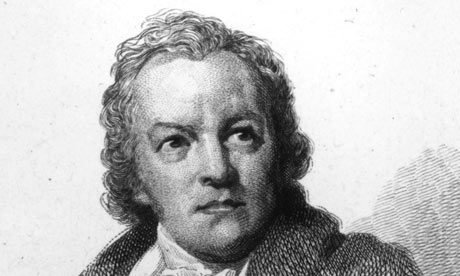
Allan Brown's original typescript "Five Pencil Drawings by William Blake Illustrating the Book of Enoch" is held by the Tate Library in London. The typescript, dated 1925, bears a declared provenance of New Rochelle, New York. Mr. Brown was an attorney, not an art historian. That said, his Blake study makes clear that he was not one to do things by halves.
Some fifteen years after "Five Pencil Drawings" was deposited in the Tale Library, a version of it was published in The Burlington Magazine for Connoisseurs, under the title "Blake's Drawings for the Book of Enoch."1 A generation later, in 1973, Robert N. Essick, the prominent Blake scholar, reprinted "Blake's Drawings" in his collection The Visionary Hand..2 In the early twenty-first century Mr. Brown's essay continues to be cited in scholarly studies, most recently (at time of writing) in 2011.3
By the time he made this contribution to Blake scholarship, Mr. Brown's interest in the author was one of long standing. In a letter to his friend Marion Baldwin, dated 19 December 1966, Mr. Brown writes of his activities in 1929, saying, "...even at that time I had studied Blake for many years, at least ten." In March and April 1920 he had purchased at auction two of Blake's letters as well as two primary documents related to Blake's 1804 trial for sedition, an event naturally of particular interest for a lawyer. And whilst the present essay focuses on a rather small group of late sketches, Mr. Brown displays a long familiarity with Blake's extensive worklist when he confidently dates the sketches and follows threads of their themes and methods back to a range of earlier works.
The essay shared here also suggests that beyond the Society of Friends it was perhaps Blake who initially stimulated Allan Brown's spiritual search, no less than a decade before he became associated with A. R. Orage when the latter came to New York City in 1925 to promulgate the psychological developmental methods of George Gurdjieff.
Possibly through Orage, Allan Brown met a kindred spirit in Carl Zigrosser, fellow practitioner of Gurdjieff methods and one of the better known American art critics of his generation. Mr. Zigrosser played an especially important role in elevating the critical and public reception of art prints (as distinct from paintings), the very medium of Blake's artistic mastery. Zigrosser was also known for his critical studies of American artists. As of this writing I have not had an opportunity to study the correspondence between the two men,4 but clearly they shared several strong interests.
Around the time of the Burlington publication, Mr. Brown donated the four aforementioned Blake documents, together with other Blakeiana, to the library of Trinity College, Hartford, Connecticut.5
Allan Brown's attraction to Blake was intensely personal and did not abate with his disposition of the Blake materials. His abiding interest in Blake's prints is evidenced in the same letter quoted above, written two days before his death. In it Mr. Brown writes that "practically all of Blake's prophetic books have been analyzed by me, and when you come here I will show you these articles if you wish to see them."
To the Tate Library the site proprietor proffers grateful thanks for making available Mr. Brown's 1925 manuscript.
[1] "Blake's Drawings for the Book of Enoch," The Burlington Magazine for Connoisseurs 77, no. 450: 80–81 + 83–85. Access to the published version of this article is available through Google Books.
[2] Robert N. Essick, ed. The Visionary Hand. Essays for the Study of William Blake. Los Angeles: Hennessy & Ingall, 1973. Mr. Brown's essay appears on pp. 105-16.
[3] György E. Szönyi. "Promiscuous Angels: Enoch, Blake, and a Curious Case of Romantic Orientalism." Romanian Journal of English Studies, 2011.
[4] The Brown-Zigrosser correspondence is curated at the Van Pelt Library of the University of Pennsylvania.
[5] A description of Mr. Brown's gift is given at:
library.trincoll.edu/research/watk/manuscripts/holdings.cfm, cataloged as follows:
Blake, William, 1757-1827. 3 boxes.
English poet.
Contains 2 manuscript letters from Blake; documents on his 1804 trial; correspondence regarding Blake by Thomas Carlyle, and between Seymour Kirkup and Algernon Charles Swinburne regarding Blake; correspondence and other papers of Allan R. Brown relating to the donation of his Blake collection to Trinity. Photostatic copies of manuscripts. Arranged and cataloged.
Gift of Allan R. Brown.
| << Writings of Allan R. Brown | 5 Pencil Drawings by William Blake >> |